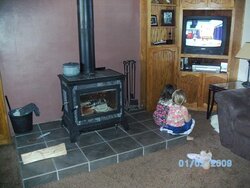do you guys think its ok to use galvanized steel studs for the hearth? my nc30 is in and i need to build a hearth theres a guy selling galvanized steel studs 2x8's by as long as i like for 1$ a linear foot
would these be ok to use?
would these be ok to use?



 !
!
